Sonoma Beekeeper Dives Into the Fall Season’s Other Crush
Dry Creek Valley’s sprawling Preston Farm & Winery is an oasis of fruit and flowers beside a meandering, salmon-spawning stream. Visitors often hear a symphony of birds, singing and chattering and fluttering their joy. Yet on this particular warm day, the birds were taking it easy — probably staying cool in the shade of the olive and apple trees. The only sound, to a careful ear, was the meditative hum of thousands of bees, hanging out by the front entrance to their hives.
Bees are smart, says Sonoma County Bee Company owner Candice Koseba. They increase their population rapidly in late spring and forage for nectar and pollen at warp speed while there are lots of things in bloom. That’s in anticipation of chilly winter, when the bees hunker in their hives, dining on the food they’ve stored in their honeycomb from earlier in the year. A spell of scorching heat is good reason for the bees to chillax for a bit.
Such seasonal sensibilities mean the best time for beekeepers to gently harvest honey is in the fall, when the sweet stuff is especially abundant and beekeepers can be sure to leave enough in reserve to help ensure the hive makes it through winter.
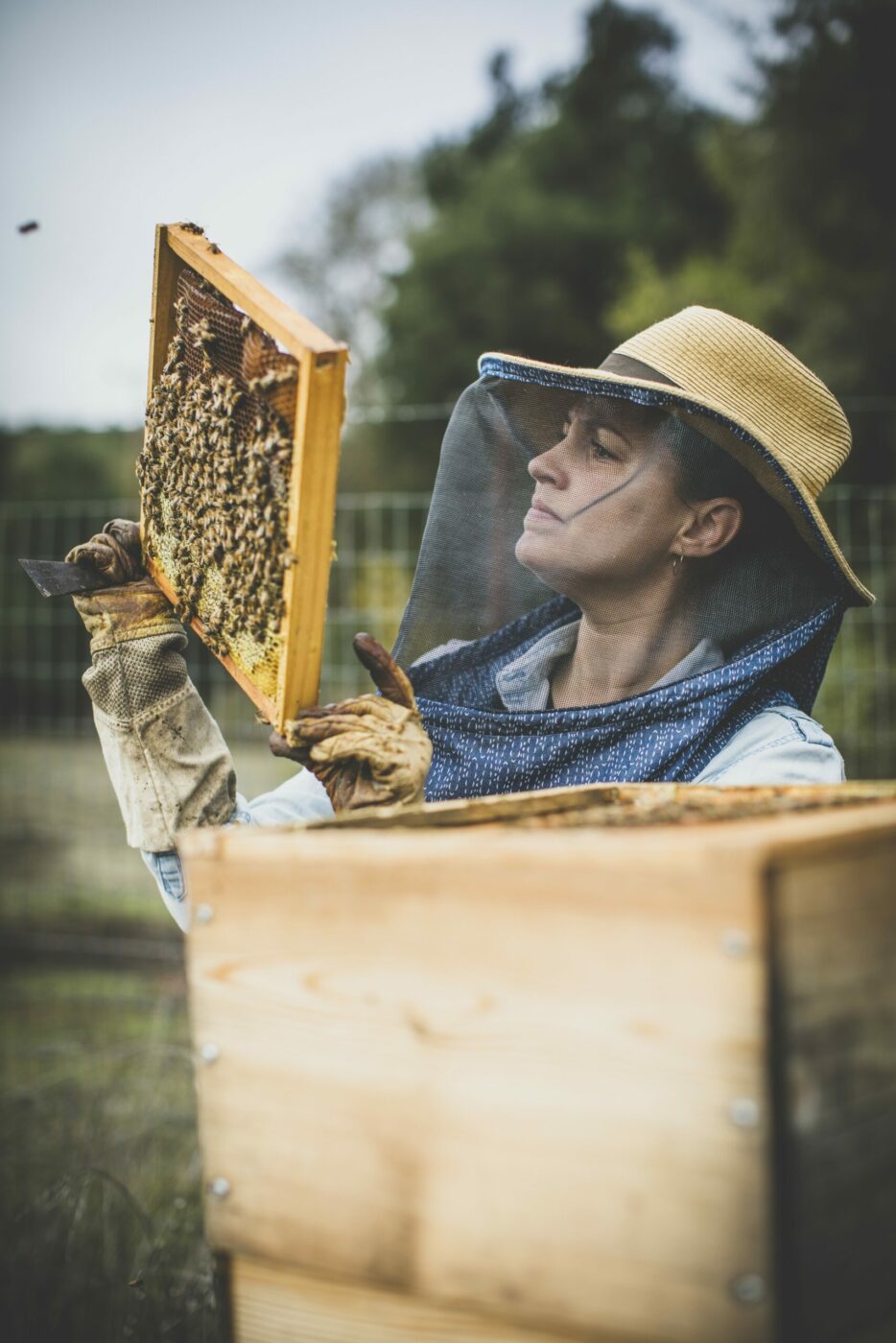
Autumn is the only time you’ll find Koseba deep in what she calls her “honey crush.” She will have spent the previous weeks visiting her hives and collecting heavy, fragrant frames of honeycomb. Then she ever-so-carefully brings them into what she calls her “sugar shack,” a tidy cottage workshop at the entrance to Preston Farm.
A honey crush is an uncommon thing, left to boutique (or some might say, obsessive) specialists. Most commercial honey is extracted by placing saturated honeycombs into a centrifuge machine, which spins and removes the honey en masse. In contrast, Koseba works like a masseuse, placing her frame bins atop a strainer tub, then carving out the honeycomb by hand with a 3-inch paring knife. She reaches into the tub with both hands, gently crushing the combs, in a sticky ritual that releases more nutrients.
“When you do it in a spinner, it pulls the honey out — but when you crush by hand, the honey sinks down through all that beautiful comb,” she says. “The wax is covered in pollen, and the comb is laced with propolis, so crushed honey keeps a lot more of all the good things.”
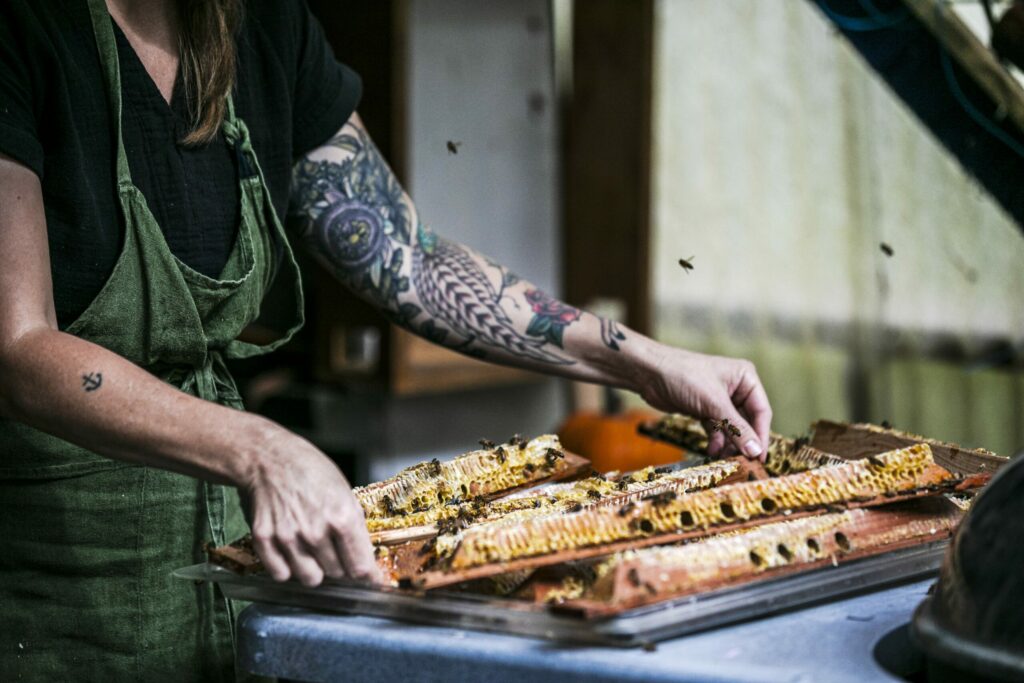
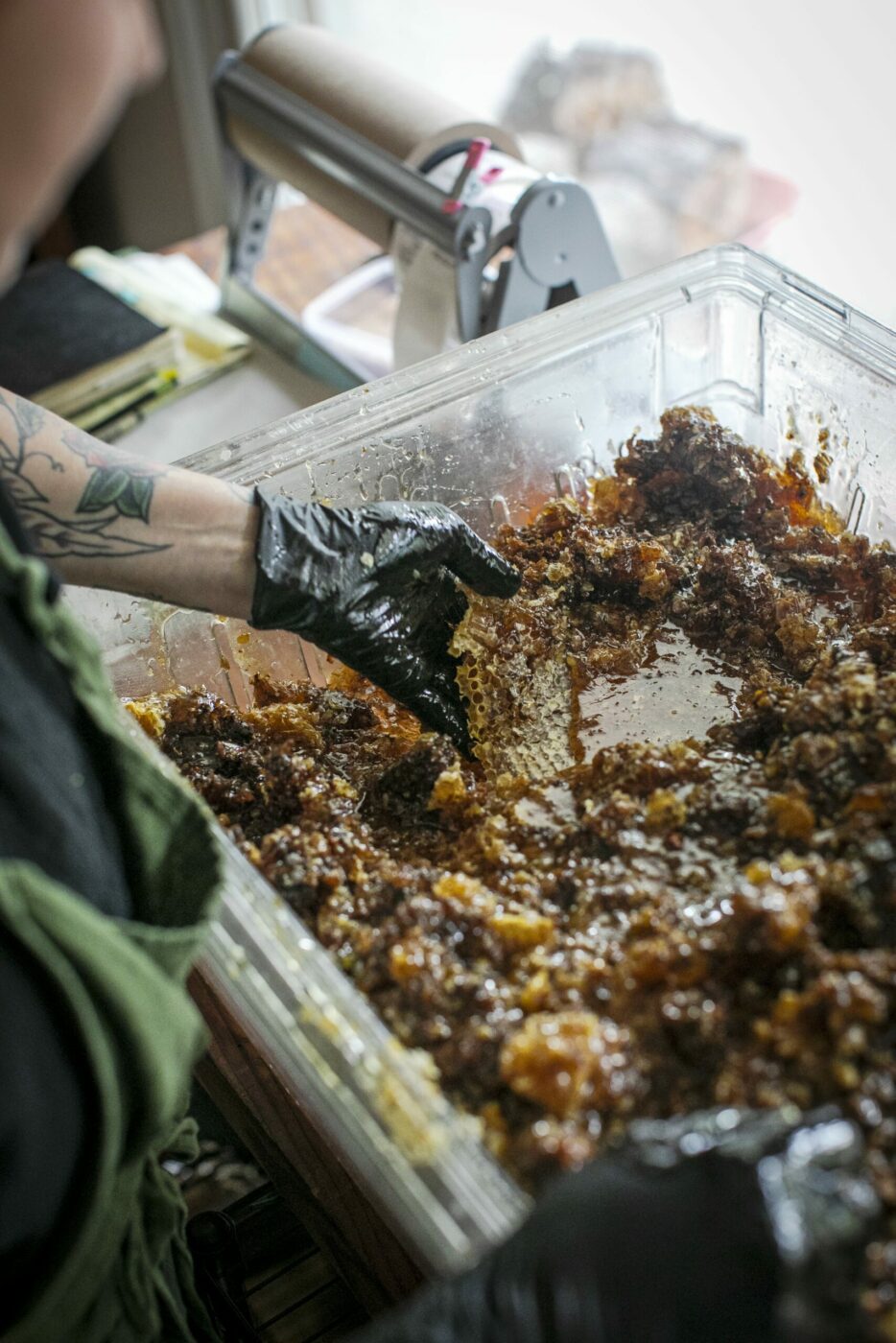
Bee pollen, which is gathered from plants and stored in the honeycomb along with the honey, is rich in vitamins, minerals, enzymes, amino acids and antioxidants.
Koseba leaves her messy work to let it rest a while, with the amber-hued syrup leisurely dripping into a tap bucket, then does a final pass through a fine strainer.
“When we pour it out, there’s still a lot of wax in it, and there might be bee parts in there, or pieces of wood frame that came from when we were scraping. But this strainer catches all of that,” she says. “Then we bottle it — no heat.”
Regular honey is pasteurized for smoother texture and longer shelf life, but that heat can often destroy some of honey’s healthiest compounds, like the bee pollen and antioxidants, she notes. “Regular” honey can also contain added sweeteners like sugar or corn syrup (though in that case, it must be labeled a blend).
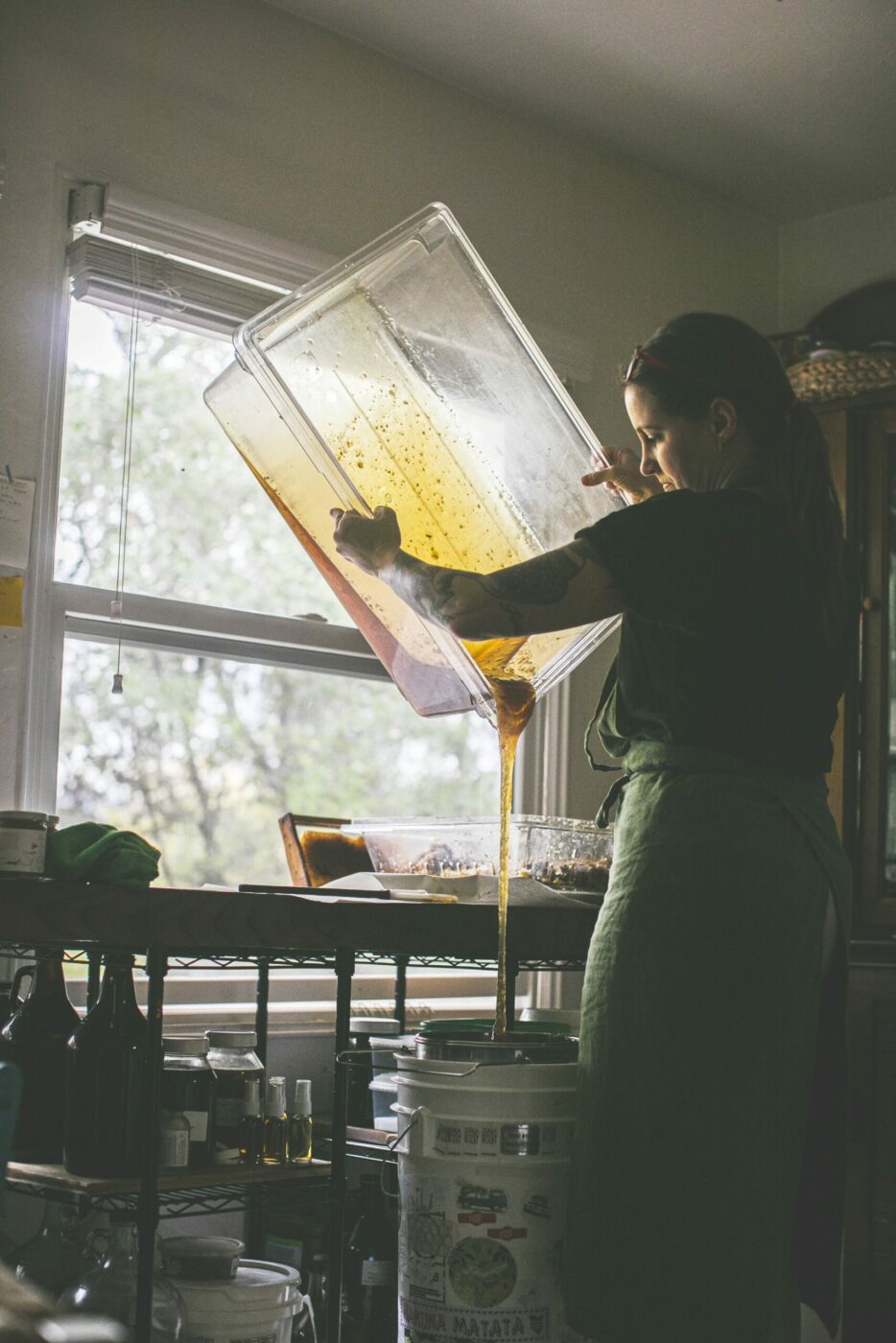
Aficionados can taste the difference. Sonoma County Bee Company honey beckons with a more dynamic but delicate flavor, enchanting with complex notes instead of just sweet through and through.
For all her expertise, every day is a learning experience, Koseba admits. Though she’d trained as an herbalist and chef, she’d never thought much about bees before opening her company in 2019. Back then, she was working with SingleThread owners Kyle and Katina Connaughton as a culinary liaison. She and her husband, chef Aaron Koseba, had first met the Connaughtons after hosting them at a coastal foraging dinner in Carmel-by-the-Sea.
After learning the SingleThread folks wanted to keep bees on the 5-acre Healdsburg farm that feeds their restaurant, Candice Koseba joined the Sonoma County Beekeepers Association and took courses at Santa Rosa Junior College with local bee expert Serge Labesque. Apiarist Rob Keller of Napa Valley Bee Company taught Koseba the theories of sustainable beekeeping, which emphasize strong, locally adapted genetics.
Koseba quickly realized that the happiest bees are Sonoma County’s own wild bees, who are never fed artificial food or antibiotics, evolving to be strong enough to make it on their own. Or, as Keller famously calls them, “bionic bees.”
“They know where the nectar sources are, where the water is, what the weather’s like — they’re adapted, and they’re just better,” Koseba explains.
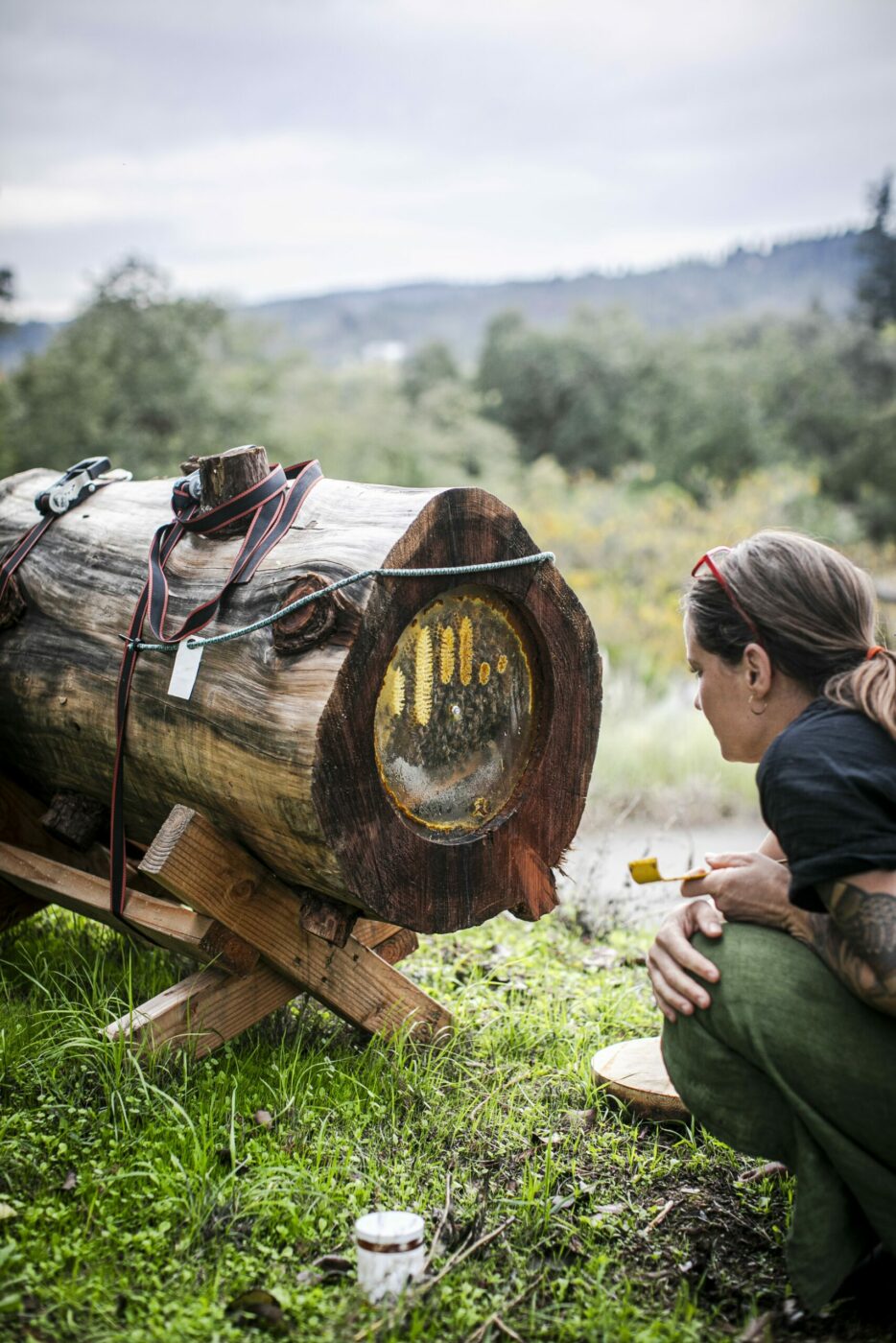
Soon, she began keeping bees at her house near Dry Creek in a heritage-style log hive, which is as it sounds: a hive from a log with a large hole bored through the center for the bees to make their home.
At first, Koseba harvested honey in her kitchen, but she soon needed more space. She thought of the relationship she’d built with Preston Farm owner Lou Preston while working with SingleThread. Preston had an empty workshop — previously used as a “vinegar shack” — and happily rented it to her. She installed 50 hives nearby and started catching local swarms that area people wanted relocated each spring.
She also learned to steel herself for some hives to dwindle down in winter, as nature takes its course.
“It’s just natural that not every colony is going to survive,” she says. “There are so many environmental factors affecting the bees that are out of our control, but I used to really beat myself up and cry when a colony would die out. It’s like getting a pet, except a lot of them.”
Sonoma County Bee Company is still in its nascent stage, with honey sales limited to 3- or 9-ounce, hand-labeled jars.
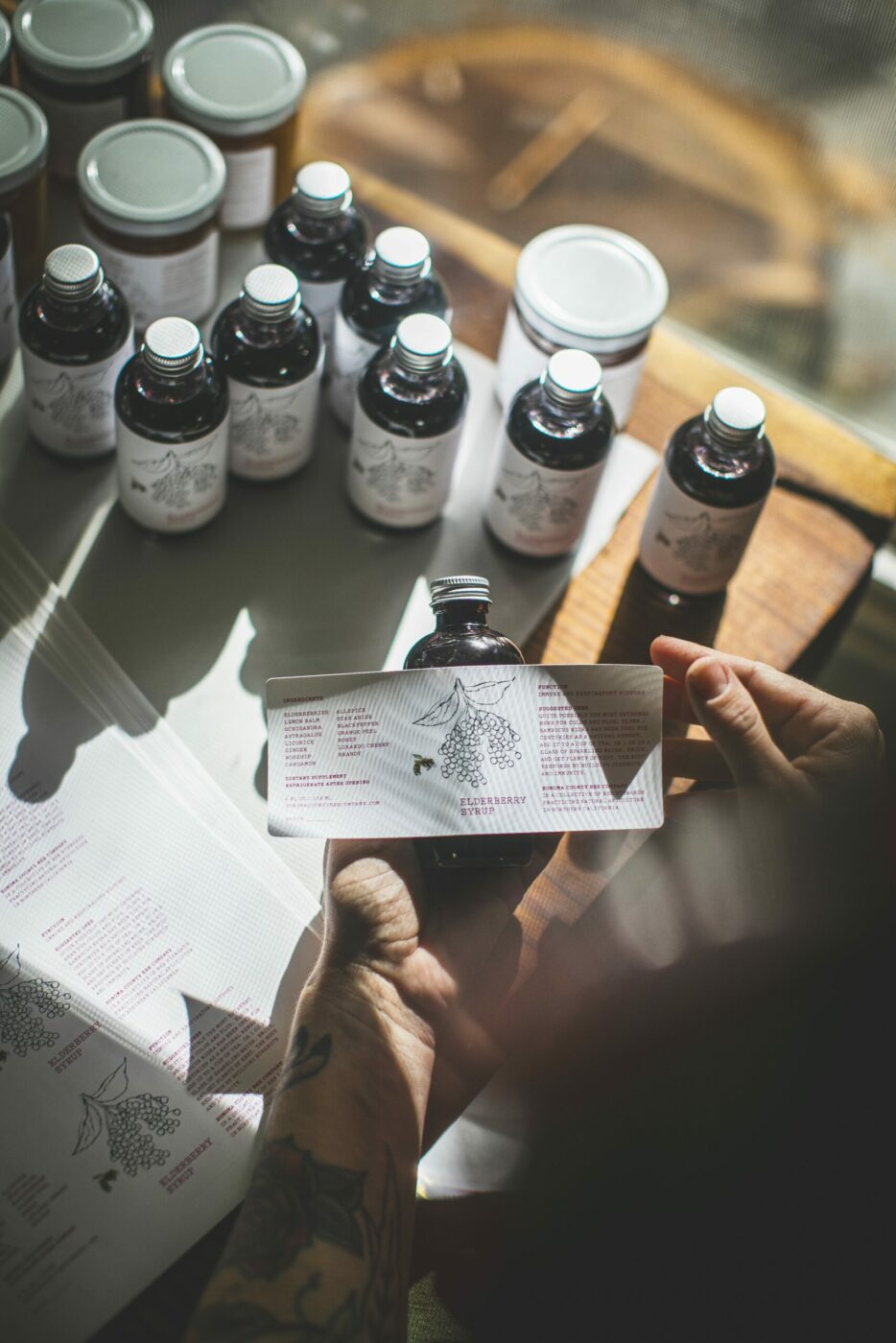
There’s no wholesale, because as she explains, “We only harvest honey when there is a surplus, in order to preserve our magnificent honeybee population. When we have honey we have it. When we don’t, we don’t.”
That’s why she waits until October to start her honey crush.
“In August, I’ll start looking at hives, saying, OK, this one looks like we could take soon, this one we have to wait, or this one, no — we can’t take any at all.”
Harvest time is special to Koseba because it’s when she reflects on the partnerships she’s developed with the bees. It’s bonding season with her colonies, in a sense, as she makes the rounds of their hives.
Koseba salutes their labor even after their honey is gently removed, melting the spent wax in a solar heater next to her shack. She handcrafts the wax into gorgeous, honeycomb-patterned candles and honey storage boxes.
“People love that they can serve their honey from the wax cells it came from,” Koseba says.
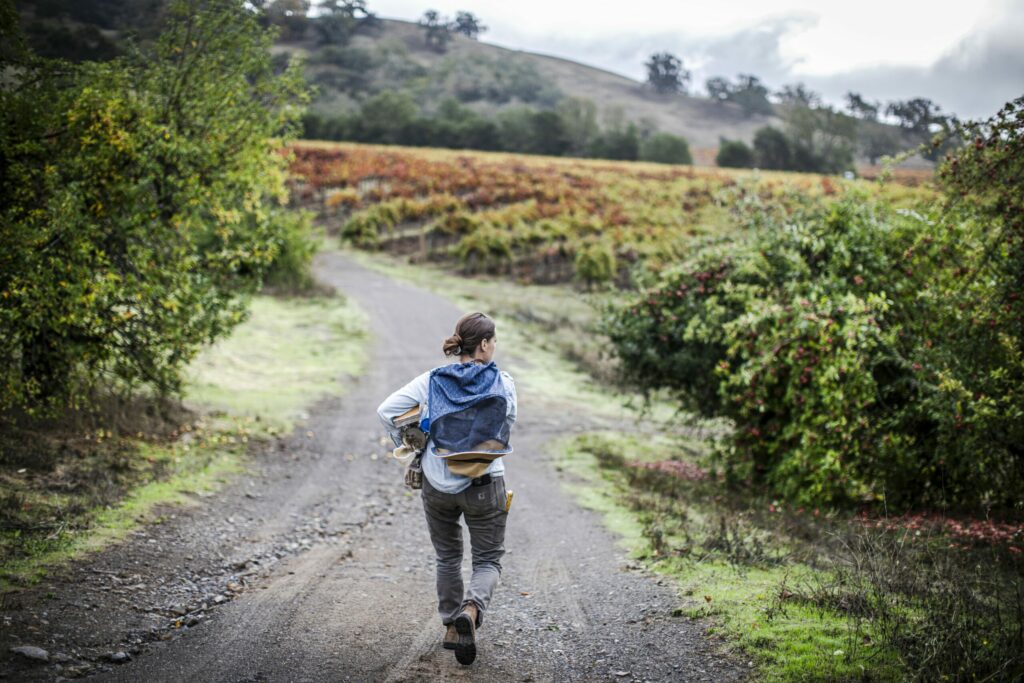
Now, she is expanding her hives into other areas, to see how they produce. One group that’s doing exceptionally well is in downtown Healdsburg, surrounded by luxurious residential gardens lush with flowers and fruit trees.
“It’s so fun to see my rural bees are the tough nuts, and then my downtown girls are more posh,” she says. “So we can split the bees up for more hives, and keep more of them generating in the areas they like.”
If some people think her raw honey is pricey, Koseba cheerfully shrugs.
“I think honey is an ingredient that needs to be more expensive — like truffles — so people value it more,” she says. “Especially real, raw honey that comes from hives that are treated in the right way. We’re not here to strip their honey, we’re here to celebrate and honor the bees.”
To learn more: Candice Koseba’s annual honey crush happens in October. Her Sonoma County Bee Company offers small-batch raw and creamed wildflower honey, herbal skincare and beeswax home accessories, plus apiary consulting and hive management services.

